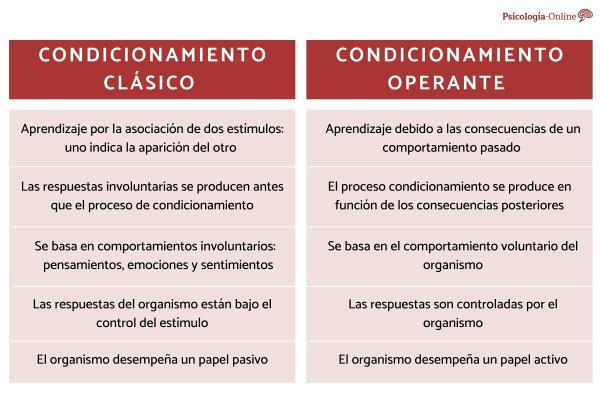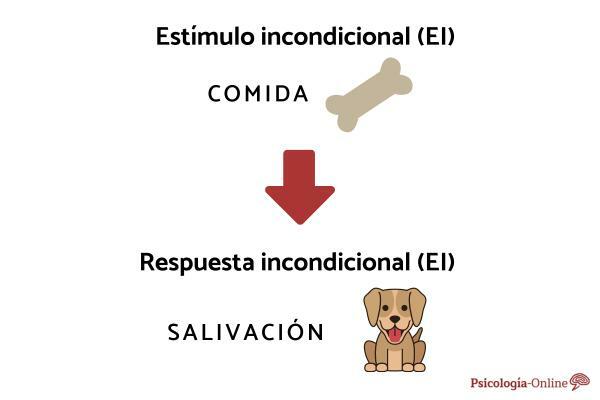
Numerous psychological theories state that The agression, is a pattern of responses acquired as a function of certain environmental stimuli according to a variety of procedures. The occurrence of aggression always presupposes frustration. Any frustrating event inevitably leads to aggression. frustration is rather a source of activation. It can lead to aggression but in an indirect way. What it generates is activation (or arousal) and this in turn provides energy to all the responses that a person is willing to make. Here we explain the antecedents of aggressiveness.
Criticisms of the classic frustration-aggression hypothesis:
- Bandura: People can learn to modify their reactions to frustration.
- Bus: The hypothesis is only fulfilled if the aggression is useful to overcome frustration, but not in other cases.
Facts in favor: Berkowitz, gave rise to current perspectives on frustration as a precursor to aggression. The fact that other reactions to frustration can be learned does not negate the existence of an innate determination. The innate thing would be for frustration to increase the probability of a certain type of response. Learning can alter or disguise the manifestation of that response.
Revised hypothesis: Aggression occurs when pre-existing dispositions have been activated in the subject to attack. Geen: Expansion of the frustration-aggression hypothesis. Frustration: It involves a change for the worse in the person's situation. It compromises previous efforts and jeopardizes future ones. It is both aversive and activating. It can be considered as another source of stress. Any change (in environmental conditions, physical pain, interpersonal attack), which involves a worsening with respect to what the person had defined as acceptable can start the aggression.
Berkowitz - Indirect connection between frustration and aggression through negative affect: "unpleasant feeling caused by aversive conditions". When a person is faced with an aversive experience, a series of cognitions, emotions and expressive-motor responses are triggered. The initial reaction to frustration is affective. After it, the simple associative process starts. Final result: tendency to attack or tendency to flee depending on the situation as proposed by Blanchard's model.
Quetelet, formulated a "Thermal Law of Crime" Þ "Violent crimes are more likely in periods of strong heat." Archival Studies: Carlsmith and Anderson: Study of Urban Disturbances in American Cities during the Period 1967-1971. Result: Direct and linear relationship between temperature and disturbance. Anderson and Anderson: Two more detailed studies:
- In Chicago, 90 days of the summer of 1967. Direct and linear relationship between the average daily temperature and the number of assaults.
- Murders and rapes committed in Houston during the 2-year period. The maximum temperature of each day studied was contrasted. Direct and linear relationship between temperatures and crime.
Anderson: More comprehensive study. Violent crimes committed throughout the United States during a full decade (1971-1980). Direct and linear relationship between temperature and violent crime. Less intense between temperature and non-violent crime.
Laboratory studies: Rule: Subjects were subjected to a hot (33ºC) or cool (21ºC) temperature. The task was to write the ending of a simple story. Later, the subject was offered the possibility of administering shocks to the person who had shocked him. The room temperature was manipulated (cool 21ºC / hot 33ºC). Baron and Bell: Result: Less intensity of attack at high temperatures. Unprovoked subjects are the most aggressive in the hot condition. Baron uses the "Modulating effect of negative affect" to explain the absence of a direct relationship between heat and aggression.
Interpretation: When there is negative affect, aggression increases but only if the intensity of the affect is not exceeds certain limits: An extreme intensity of negative affect can produce responses of flight. The provocation or attack, generates negative affect, the temperature also Þ The limit can be exceeded so that the fight gives way to flight. Intermediate situations will produce intermediate negative affect and, as a result, high aggression. Heat without provocation Provocation without heat Inverted U ratio between heat and aggression.
Last test: They manipulated as a source of negative affect, not only heat but also cold (moderately cold or very cold lemonade). The intermediate negative affect (moderately cold or moderately hot temperatures), increased aggression. The intense negative affect (extreme cold or heat), reduced the aggression. Subjects are offered a glass of fresh lemonade at:
- The hot situation / provocation
- negative affect is reduced to a medium level and aggression is increased.
- The hot / unprovoked situation
- negative affect is reduced and aggression decreases.
The relationship between heat and aggression is neither direct nor linear, but is mediated by affect. An excessively strong negative affect can produce flight and not aggression.
The influence of heat on negative affect in archival data is unknown (People who choose to escape the heat or participate in riots are unknown).
Laboratory contexts allow subjects to escape from hot situations (No one forces them to stay in the experiment against their will).
Glass and Singer - The stress caused by noise does not depend so much on its intensity as on its predictability and controllability (One loud noise generates less stress than another, if it can be predicted or controlled, regardless of its intensity).
People are able to adapt to noise and act effectively despite its stressful effects, however continued noise has an effect cumulative resulting in reduced tolerance for frustration (possible antecedent to aggression): Noise can INDIRECTLY contribute to The agression.
But, noise can also contribute to aggression in DIRECT WAYS: Generating an activation that provides energy to an aggressive reaction that was already likely in the person. He does not need to feel hostility or anger towards the victim.
Geen and O'Neal
Subjects watched a movie (violent or non-violent) and then were subjected or not to loud noise. Greater aggression was the subjects subjected to violent film-loud noise.
Donnerstein and Wilson
When the person has reasons to attack, the noise intensifies the behavior. People who after being attacked were exposed to uncontrollable aversive noise attacked more intensely than those who had been attacked but without subsequent exposure to noise.
Geen
He showed that it is not so much the objective aversive character of noise that is crucial in this affect, but rather its controllability (Subjects who had the ability to control noise termination were found to be less aggressive).
Geen and McCown
They showed that differences in aggression between people exposed to controllable noise or not are due to differences in activation (Blood pressure as activation index). Uncontrollable, aversive noise intensifies aggression through the activation process.
Berkowitz pain
Pain generates negative affect, which is the immediate antecedent of aggressive reactions to the experience of pain. Importance in clearly distinguishing between the aversive stimulus and the explanation that the person has for that stimulus, which will have as a consequence the general state of negative affect that the subject.
The interpersonal attack
For many authors, the interpersonal attack is the most important antecedent of aggression (rather than frustration). Two fundamental aspects:
- The respective intensity of attack and frustration.
- Not all attacks are a history of assault.
If there is no perceived intentionality in the attack, or if its absence of malice is truly believed, the person does not feel stress and, therefore, become activated. The attack even without being perceived as intentional or malicious, activates or stresses the person. However, aggression will not occur because the person inhibits aggressive behavior, believing that it is not socially acceptable to respond aggressively to an unintended attack.
Violation of the rules
Mummendey: In most chaos, aggression is not an isolated act. Aggression occurs regularly as an episode or act in a sequence of interactions between two or more people. 4 fundamental aspects to take into account:
- The mutual interpretation of the people involved in the interaction ® making judgments about whether or not the conduct is appropriate and whether there has been an intention to harm or cause harm.
- Situational context in which said interaction is framed.
- Existence of a divergence of perspectives according to the position of each person (attacker or aggressor).
- Development over time
Da Gloria and De Ridder
Existence of a certain implicit norm always present in the interaction between people. The aversive nature of a situation is tolerated if it is considered necessary for the achievement of the objective. If this rule is violated, the conduct will be considered unjustified and will lead to assault.
Violence in the family context
Ways in which violence in the family context can be a precedent of the aggression:
- Character social learning Parents who resort to violence to impose discipline. Children learn that physical force is an appropriate procedure for resolving conflict.
- Explicit training of aggressive behavior
- Parents and siblings explain to the child when it is convenient to attack the other. Existence in the home of discord and lack of affection.
Conditions for violence in the family to become a precedent of aggression:
- Level of stress and conflict in the family.
- Training in violence. Promotion of an implicit cultural norm, according to which violence in the family is acceptable.
This article is merely informative, in Psychology-Online we do not have the power to make a diagnosis or recommend a treatment. We invite you to go to a psychologist to treat your particular case.


